Day 171-177: Community
 March 4, 2017
March 4, 2017 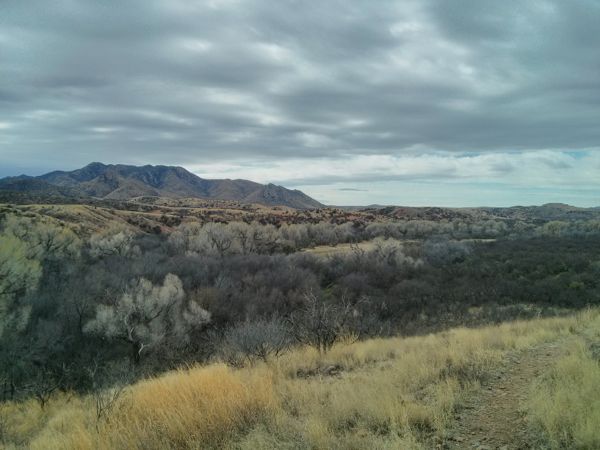
A picture without any people may seem like an odd beginning for a post titled "community." But this picture would not be possible without the work of many different people coming together in common cause.
Most obviously, the cottonwoods below mark Sonoita Creek in the Sonoita Creek Preserve, a Nature Conservancy preserve founded in 1966 to protect one of the few remaining permanently flowing streams in Arizona. This mostly undeveloped watershed and riparian area provides crucial habitat for migrating birds and wildlife of all kinds. Trails from this site lead upstream to the Paton Center for Hummingbirds (an Audubon education site) and off into the surrounding hills.
The mountains in the distance are part of the Coronado National Forest, an excellent example of land that we hold in common. This forest is composed of at least 12 distinct mountain ranges in Arizona and New Mexico that create "Sky Islands"—cooler, moister pockets of forest separated by large desert basins. These forests are the remnants of larger forests that covered this area when the climate was cooler and wetter during the last ice age. If you hiked up the side of the mountain you would travel through changes in climate equivalent to travelling from the deserts of Mexico to the forests of Canada. The mission of the Forest Service for this forest is to sustain the unique biodiversity of the sky island ecosystems and provide a variety of high quality visitor opportunities and services within the capabilities of these ecosystems.
And in the far distance, out of sight but just over the mountains, is Mexico, whose influence is felt everywhere in these southern states--in the language, the food, the history, the people. Nothing really stops at the border and the plants, animals, weather, people and culture all intermingle here.
Just a few miles away from where this picture was taken is Deep Dirt Farm, on the other side of the town of Patagonia.
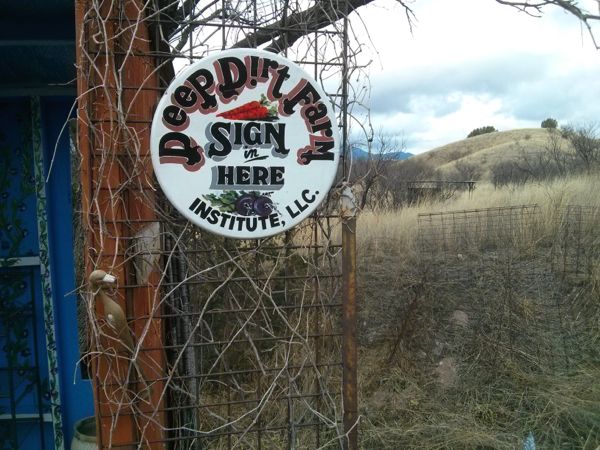
I had the opportunity to work with Kate Tirion, the owner of Deep Dirt Farm, for a day with her Women Grow Food group. Kate cares for 34 acres of grassland and is integrating organic food production with habitat and watershed restoration as well as doing permaculture education and leadership training for young people. Everything you see in the greenhouse below is grown by the Women Grow Food group for their own use and for the senior center in Patagonia which provides the main meal of the day for a number of elderly people in the community. The farm is based on biodynamic permaculture principles and no fertilizer is used on these crops other than compost.
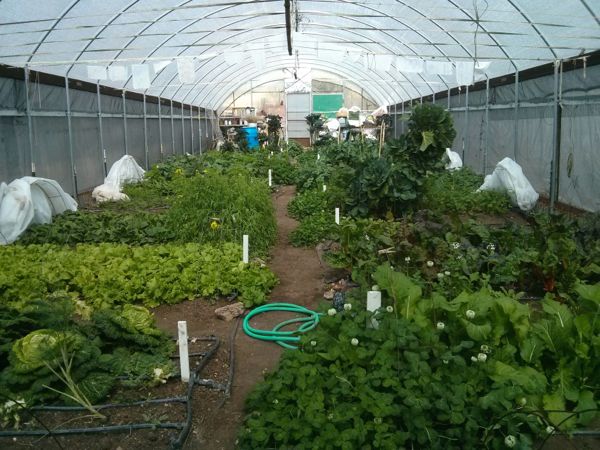
I also volunteered for a day at the plant nursery run by Borderlands Restoration, a group that is working on local community-based watershed and habitat restoration around the Mexican-US border. Borderlands Restoration greenhouses are located on land owned by Native Seeds/SEARCH, an organization working to preserve local genetic diversity of agricultural crop seeds. To come full circle again, Native Seeds/SEARCH bought this land in a cooperative agreement with The Nature Conservancy, who manages the portion of the land where Sonoita Creek is located. Borderlands Restoration also has a seed bank, theirs focusing on hand-collected wild native seeds, and they grow plants for use by organizations like the National Park Service or BLM in revegetating disturbed areas.
Borderlands Restoration is also working on a project which would preserve a wildlife corridor between two mountain ranges in the Coronado National Forest, one of the few areas in the U.S. where jaguars live. This project is attempting to integrate the needs of people and wildlife by turning a bankrupt proposed housing development into a much smaller, more compact set of lots for houses while protecting a important area for wildlife travelling between Red Mountain and Mt. Wrightson. This beautiful canyon with oak-grassland habitat is part of that project.
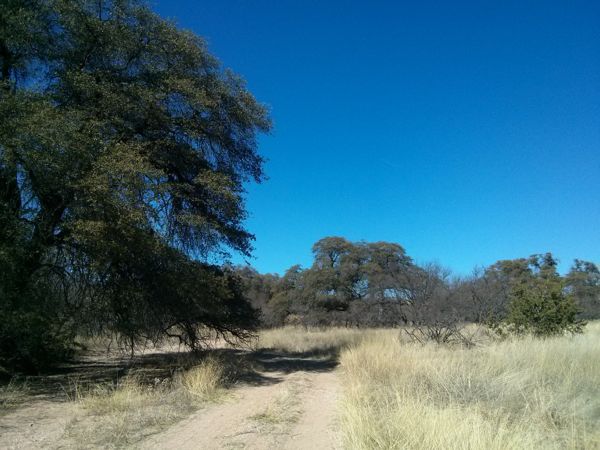
Deep Dirt Farm is now a demonstration site for Borderlands Restoration and all of these groups are working together to begin teaching sustainable principles and leadership skills through the Borderlands Restoration Leadership Institute. Their mission is to be a project-based learning laboratory cultivating a restoration economy in the US-Mexico borderlands.
Why am I writing about all this? I don't exactly know myself. Only I was drawn here by Kate Tirion's image of community as mosaic—that each of us is a tile in a picture which begins to form as we bring our talents together. Our first job is to make our own tile shine, but the picture doesn't arise until we find our place in the whole.
I have been part of many wonderful communities in Seattle: writing and dance groups, Freedom Project, graduate school, the Hakomi training community, Fremont Healing Arts, Present Sense, our neighborhood, and friends and family. I did not go on this trip because I needed to find better communities to work with!
However, as we travel, my sense of community is starting to expand. Rather than thinking of community as an isolated group doing a specific thing, I am starting to have a sense of how all these different communities work together to create the fabric of the society we live in. I am beginning to assume that one organization will be connected to the work of another organization, and am surprised if they don't know about each other. Then I realize that these organization may be 100 miles apart, a distance equivalent to me collaborating with someone in Bellingham or Ellensburg when I lived in Seattle—something I wasn't likely to be doing. But somehow this level of connection is starting to seem both more natural and more important to me now. That we are aware of other people doing related work in other parts of the country. That we are able to inspire each other. That we can enhance our creativity through diversity. That we are able to share resources and knowledge. That we can support each other—mourn together when things fail, celebrate when they succeed, and provide hope in difficult times.
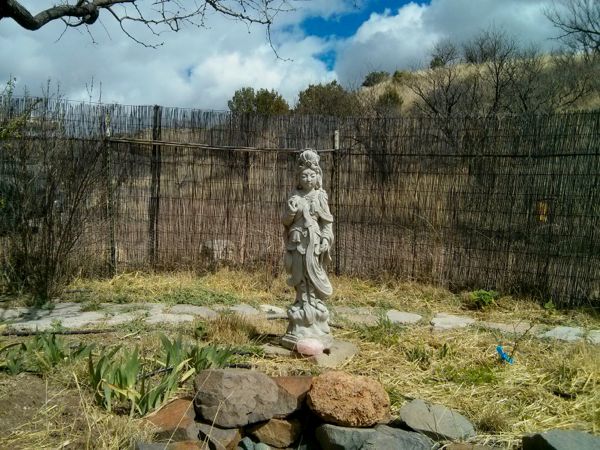
------------------
When we left Patagonia Lake State Park on Feb 23rd we didn't know where we would stay next. Friends that we met at the Salton Sea had recommended the town of Patagonia, but every time I called the only RV park in town I got the same strangely non-committal answer about whether they had available space. None of my other requests for a place to stay had panned out. As we were driving through town, I called the RV park one last time, and this time there was an unexpected availability for the night! Once in the park, the owner was able to find room for us for a week. I can't imagine having missed Patagonia, as our experience there was so rich in connection and learning. Definitely a lesson in trusting things to unfold as we go.